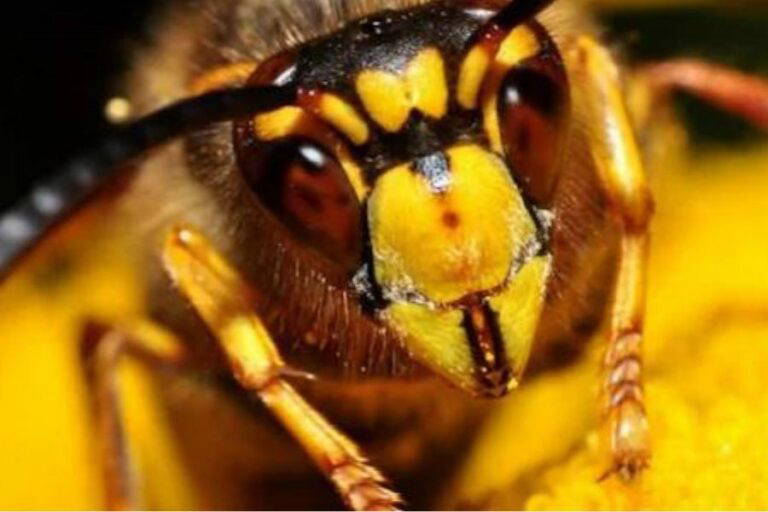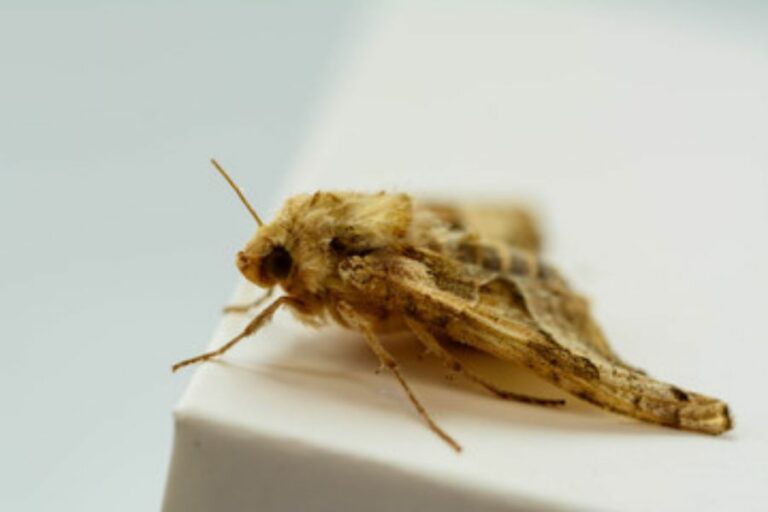Wasps, Bumble Bees, Honey Bees, Hornets. What’s the difference?

Key facts on wasps, bumble bees, honey bees and hornets
Liverpool Pest Control have provided some key facts regarding the most common species living within the UK: wasps, bumble bees, honey bees and hornets. We have created listings to make it easier for you to identify the differences between their physical appearance, habits, lifecycle and nests. When you’re able to understand these differences this will help you to determine the best form of treatment required for your property or business. Please note, that Honey Bee species are extremely valuable to the British ecosystem and require a different from of treatment for them to be removed. Therefore, if you suspect you’re infestation to be of Honey Bee species, please contact us and we will be able to advise you further.
Wasps

Physical Appearance
- Bold, striped, yellow and black body.
- Obvious waist between the thorax and abdomen, with the sting situated at the abdomen.
- Queens approximately 2 centimetres long.
- Workers approximately 1.3 – 1.8 millimetres.
- Two sets of wings and long antennae.
Feeding Habits
- Bold, striped, yellow and black body.
- Obvious waist between the thorax and abdomen, with the sting situated at the abdomen.
- Queens approximately 2 centimetres long.
- Workers approximately 1.3 – 1.8 millimetres.
- Two sets of wings and long antennae.
Lifecycle
- Queens come out of hibernation within the season of spring and start to establish the foundations of a new nest and lay eggs.
- Over the next couple of months the nest expands, inclusive of the wasp population.
- Workers support the growth of the nest and raise the reproductive queens offspring.
- The Queen continues to reproduce eggs.
- Towards the season of autumn, the nest produces numerous males and females which then reproduce.
- Within the winter season, these new queens migrate and hibernate predominantly in warm haven, such as lofts within their own nests – often the size of a golf ball.
- Nests most commonly die off, although few do survive. Thus includes all males and workers dying off.
- A colony has the ability to produce a population of 25,000 wasps.
- Worker wasps life span is short and often only lasts between 12-24 days.
- A queen wasps life span is far greater, lasting up to a year.
Sting Habits
When disturbed or provoked, they become territorial and aggressive. Well-known to sting readily and repeatedly, and can sting within packs.
Impact on the ecosystem
- They help control Britains pest population.
- In addition, today’s agriculture manufacturing commonly deploys them to conserve our harvest production.
Wasp Nests

- The Common Wasps nests are based on approximately 200 tiny, honeycomb-like cells.
- Constructed of wasp paper; formed from chewing wood into a paste-like pulp and together with wasps salvia forms the foundations of a nest.
- Nests approximately last for three to four months and are generally the size of a basketball.
- In fewer occasions nests have been known to last longer and can grow to the size of three basketballs.
- Wasps tend no to return to the same nest annually.
- When a nest is recognised as dormant, please contact Liverpool Pest Control professionals to remove it.
- When nests are active, please stay at a safe distance and contact Liverpool Pest Control to arrange a visit to fumigate the infestation and remove the nest.
Bumble Bee

- Bumble bees tend to form their nest from abandoned holes or tunnels underground, i.e, mouse holes or rodent burrows. As well as under piles of tussock grass or leaves, stones, logs piles or undisturbed compost heaps, small bird boxes or feeding pegs, and under garden out buildings. Furthermore, occasionally above ground in wall, sheds, crawl or attic spaces and chimneys.
- Nests are established from pollen and wax.
- When a nest is recognised as dormant, please contact Liverpool Pest Control professionals to remove it.
- When nests are active, please stay at a safe distance and contact Liverpool Pest Control to arrange a visit to fumigate the infestation and remove the nest.
Physical Appearance
- Large, very hairy and mainly black with varying degrees on yellow stripes.
- Their abdomen colour varies in Britain’s varieties. However, rarely orange in Britain.
- Legs are hanging down.
- Queens are approximately 2 – 2.2 centimetres long.
- Workers are approximately 1.1 – 1.7 centimetres long.
Feeding habits
- Bumble bees are herbivorous and primarily feed on nectar and pollen from flowers.
Lifecycle
- Queens usually hibernate underground in the season of winter.
- They emerge out of hibernation within the season of spring and start to establish the foundations of a new nest and lay eggs. Often seeking the bases to their nest from abandoned mouse holes.
- Over the next couple of months the nest expands, inclusive of the bumble bee population.
- Workers support the growth of the nest and raise the reproductive queens offspring.
- The Queen continues to reproduce eggs.
- Towards the season of autumn, the nest produces numerous males and females which then reproduce.
- Within the winter season, these new queens hibernate predominantly in warm haven.
- Nests most commonly die off, although few do survive. Thus includes all males, workers and old queens dying off.
- A colony has the ability to produce a population of 200 worker.
- Worker bumble bees life span is short and often only lasts between three to six weeks.
- A queen bumble bees life span is far greater, lasting up to a year.
Sting habits
- They are essential player in Britain’s pollination.
- They transfer the pollen between plants and flowers, and thus supports with fertilisation.
Impact on the ecosystem
- They are essential player in Britain’s pollination.
- They transfer the pollen between plants and flowers, and thus supports with fertilisation.
Honey Bees

Physical appearance
- Thin in body with little hairy. The opposite to a bumble bee.
- Black and golden or amber orange striped bodies.
- Legs are primarily hidden.
- Queens are approximately 2 – 2.2 centimetres long.
- Workers are approximately 1.1 centimetres long
Feeding habits
- Honey bees are attracted to sugars and have been known to seek out liquid sweets, such as ice lollies, sugary drinks and watermelons.
- They are also attracted to pollen and nectar as an additional food source.
- Worker bees can also drink the nectar from plants and flowers, and store in their crop before taking it back to their hive. From here, they share the nectar with fellow workers in a process called trophallaxis.
Lifecycle
- Honey bee colonies can survive through winter.
- Forming a winter cluster which helps them to keep warm and survive the cold temperatures.
- No eggs are laid over this period.
- When the warm temperatures emerge, the queen will start to reproduce eggs.
- The Queen continues to reproduce eggs. Approximately 1000 eggs per day – roughly one egg every 20 seconds.
- Over the summer season the nest expands, inclusive of the honey bee population.
- Workers support the growth of the nest and raise the reproductive queens offspring.
- Towards the season of autumn, the nest produces numerous males and females which then reproduce.
- Life spans vary vastly, depending on requirements within the colony.
- Worker honey bees life span is anywhere between a six to seven weeks.
- Drone honey bees life span is anything between a few weeks to up to four to six months.
- A queen honey bees life span is far greater, lasting anywhere from two to three or four years.
Sting habits
- Honey bees are passive, not aggressive or do not seeking conflict.
- They only attack if they feel extremely threatened.
- Once honey bees sting, they leave the sting behind with part of their abdomen. Following this they tend to die.
Impact on the ecosystem
- They are essential player in Britain’s pollination.
- They produce honey.
Nests

- Honey bees tend to form their nest from abandoned holes or tunnels underground, i.e, mouse holes or rodent burrows. As well as under piles of tussock grass or leaves, stones, logs piles or undisturbed compost heaps, small bird boxes or feeding pegs, and under garden out buildings. Furthermore, occasionally above ground in wall, sheds, crawl or attic spaces and chimneys.
- Nests are established from wax that secrete from glands in their abdomens.
- When a nest is recognised as dormant, please contact Liverpool Pest Control professionals to remove it.
- When nests are active, please stay at a safe distance and contact Liverpool Pest Control to arrange a visit to fumigate the infestation and remove the nest.
Hornets

Physical appearance
- Hornets are Britain’s largest social wasp.
- Asian hornets have a thin, velvety body.
- Their predominantly dark brown or black in colour, with a yellow or amber stripe across the fourth segment of the abdomen.
- They are very recognisable due to their yellow tipped legs.
- Queens are approximately 2.5 – 3.5 centimetres long.
- Workers are approximately 1.5 – 2.5 centimetres long.
Feeding habits
- Hornets are invertebrates and feed on insects such as spiders, flies, bees and other insects.
- They have had impact on the UK’s bee population and pollinating insects as they have been known to feed on up to 50 Honey Bees a day.
- Queens can occasionally feed on leaves, tree sap or windfall fruit.
Lifecycle
- Hornets appear in the season of spring and establish their nests in sheltered hollow trees.
- The queen then establishes a nest of up to 50 chewed cells, whereby she lays an egg in each.
- After a week workers are formed.
- Over the next couple of months the nest expands, inclusive of the hornet population.
- At peak population the colony growth can surpass 700 workers.
- Workers support the growth of the nest and raise the reproductive queens offspring.
- Adult drones do not support in nest maintenance, foraging or care taking of the larvae.
- Throughout the season of autumn, drones leave the colony to mate and die off after this period.
- Towards the end of autumn, workers die off and only fertilised queens survive through winter.
- Life spans vary vastly, depending on requirements within the colony.
Sting habits
- Hornets have a reputation for being aggressive or seeking conflict.
- However, prior to being threatened, they can also appear docile.
- They rarely sting but when you are stung they are very painful.
Behaviour
- They are not active at night.
- Due to their size they have been known to be louder hummers than other social wasp species.
Impact on the ecosystem
- They have major repercussions for the UK’s bee population and pollinating insects.
- They have been known to feed on up to 50 Honey Bees a day.
Nests

- Hornets tend to form their nest in dark places, such as in hollow tree trunks, chimneys, wall cavities and sheds.
- They construct papery nests, formed from chewing wood into a paste-like pulp and together with wasps salvia forms the foundations of a nest.
- Nests approximately last for three to four months and are generally the size of a basket ball.
- Nests predominantly die before winter.
- When a nest is recognised as dormant, please contact Liverpool Pest Control professionals to remove it.
- When nests are active, please stay at a safe distance and contact Liverpool Pest Control to arrange a visit to fumigate the infestation and remove the nest.





